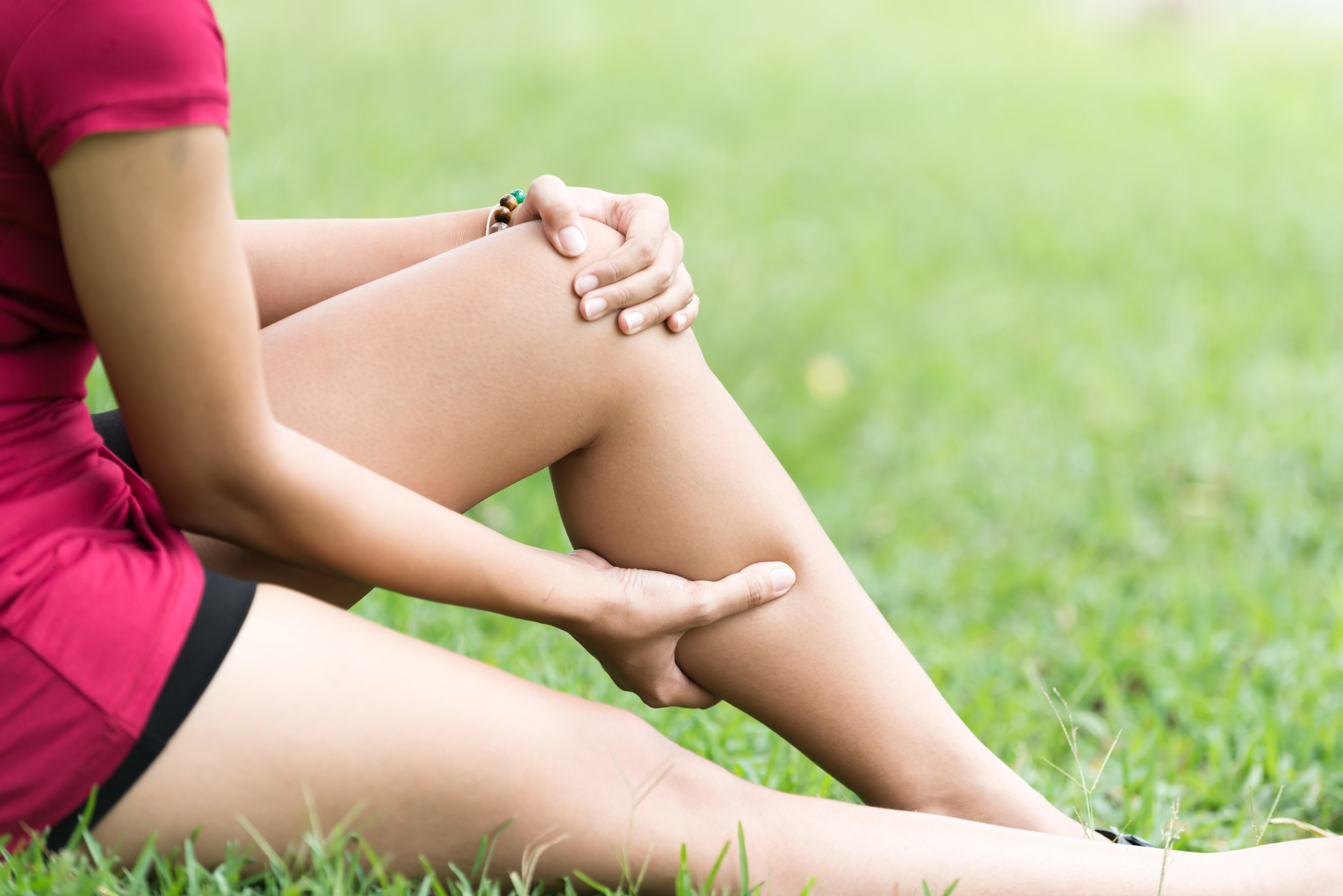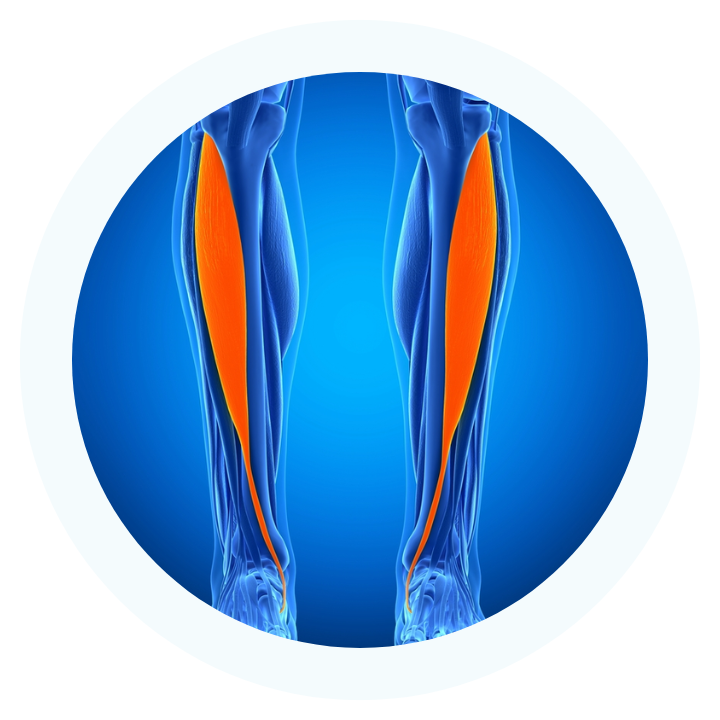Treatment for Shin/Calf Pain
In Texas


Common Causes of Knee Pain
- Osteoarthritis: Osteoarthritis in the knee occurs when the cartilage that cushions the joint wears away, leading to pain, stiffness, and decreased range of motion.
- Tendonitis: Knee tendonitis involves inflammation of the tendons around the knee joint, often due to overuse or repetitive movements. This can cause pain and tenderness.
- Bursitis: Bursitis is the inflammation of the bursae, small fluid-filled sacs that cushion the knee joint. This condition causes pain and tenderness, particularly with movement.
- Meniscus Tear: A meniscus tear is a common injury where the cartilage in the knee joint is torn, often due to sudden twisting or impact. This can cause pain, swelling, and difficulty moving the knee.
- Ligament Injuries: Ligament injuries in the knee, such as ACL, PCL, MCL, or LCL tears, occur due to trauma or sudden movements, leading to pain, instability, and swelling.
- Patellofemoral Pain Syndrome: Patellofemoral pain syndrome, also known as runner’s knee, involves pain around the kneecap due to overuse, improper alignment, or muscle imbalances.
- Iliotibial (IT) Band Syndrome: IT band syndrome occurs when the iliotibial band, a thick band of tissue running from the hip to the knee, becomes tight or inflamed, causing pain on the outer side of the knee.
- Osgood-Schlatter Disease: Osgood-Schlatter disease is a condition seen in growing adolescents, where the tendon below the kneecap becomes inflamed, causing pain and swelling.
- Knee Fractures: Fractures in the knee bones, often due to trauma, can lead to severe pain, swelling, and difficulty moving the knee.
- Knee Dislocation: A knee dislocation occurs when the bones in the knee joint are forced out of alignment, causing severe pain, swelling, and instability.
- Patellar Tendinitis: Patellar tendinitis, or jumper’s knee, involves inflammation of the patellar tendon, causing pain and tenderness just below the kneecap.
- Gout: Gout is a form of arthritis caused by the accumulation of uric acid crystals in the knee joint, leading to sudden, severe pain, redness, and swelling.
- Myofascial Pain Syndrome: Myofascial pain syndrome involves the development of trigger points in the muscles around the knee, causing referred pain and tenderness.
Diagnosing Knee Pain
Diagnosis of knee pain involves a thorough medical history and physical examination. Imaging tests such as X-rays, MRI, or CT scans may be used to identify the underlying cause. In some cases, blood tests or joint fluid analysis may be necessary to rule out other conditions.

Treatment Options for Shoulder Pain
- Corticosteroid Injections:Injections of corticosteroids into the knee joint to reduce inflammation and pain, providing relief for various knee conditions.
- Viscosupplementation: Injections of hyaluronic acid to lubricate the joint and improve movement, particularly for osteoarthritis.
- Genicular Nerve Blocks: Genicular nerve blocks involve injecting a local anesthetic near the nerves that supply the knee joint. This can help diagnose and relieve pain originating from these joints.
- Genicular Nerve Radiofrequency Ablation (RFA): Radiofrequency ablation uses heat generated by radio waves to destroy the nerves transmitting pain signals from the knee joint, providing long-term pain relief.
- Trigger Point Injections: Trigger point injections involve injecting a local anesthetic into specific points in the muscles around the knee to relieve pain caused by muscle tension and spasms.
- Platelet-Rich Plasma (PRP) Injection: PRP therapy involves injecting a concentration of the patient's own platelets to promote healing and reduce pain in injured or inflamed knee tissues.
- Prolotherapy: Prolotherapy is an injection-based treatment that involves injecting a solution (often dextrose) into the injured or painful area to stimulate the body's natural healing processes, thereby reducing pain and improving function in the knee.
- Amniotic Injections: Amniotic injections use amniotic fluid or tissue to promote healing and reduce inflammation, providing relief for knee injuries and degenerative conditions.
- Exosome Injections: Exosome injections deliver regenerative particles that can aid in the healing of damaged knee tissues, reducing pain and improving function.
- Over-the-Counter Pain Relievers: Ibuprofen, acetaminophen, and naproxen can help reduce pain and inflammation associated with knee conditions.
- Prescription Medications: Anti-inflammatory drugs, muscle relaxants, and pain relievers may be prescribed for severe pain and inflammation in the knee.
- Anti-Inflammatory Creams: Topical creams containing anti-inflammatory agents can be applied to the knee to reduce pain and swelling.
- Exercise Programs: Tailored exercises to strengthen the muscles around the knee, improve flexibility, and restore range of motion.
- Manual Therapy: Techniques such as massage, mobilization, and stretching to relieve muscle tension, improve mobility, and reduce pain in the knee.
- Acupuncture:Insertion of fine needles into specific points on the body to relieve pain and promote healing, which can be effective for preventing and treating various types of knee pain.
- Chiropractic Care: Joint adjustments and manipulations to improve alignment and reduce pain in the knee, particularly for conditions related to nerve compression.
- Massage Therapy: Techniques to reduce muscle tension, promote relaxation, and alleviate pain in the knee.
- Transcutaneous Electrical Nerve Stimulation (TENs) Unit: A device that uses electrical currents to stimulate nerves and reduce pain, which can be helpful for managing chronic knee pain.
- Braces & Supports: Supportive braces and supports can help stabilize the knee, reducing pain and preventing further injury.
- Ultrasound Therapy: Use of sound waves to promote tissue healing and reduce inflammation, which can help alleviate pain in the knee.
- Shockwave Therapy: A non-invasive treatment that uses shockwaves to stimulate healing and reduce pain, which can be beneficial for certain types of chronic knee pain.
Interventional Therapies
Medications
Physical Therapy
Alternative Treatments
Conclusion
Knee pain can significantly impact your daily life, but with the right approach, it can be effectively managed. Understanding the cause of your pain and working with healthcare professionals to develop a personalized treatment plan can help you find relief and improve your quality of life. If you are struggling with persistent or severe knee pain, seek medical advice to explore your options for diagnosis and treatment.
